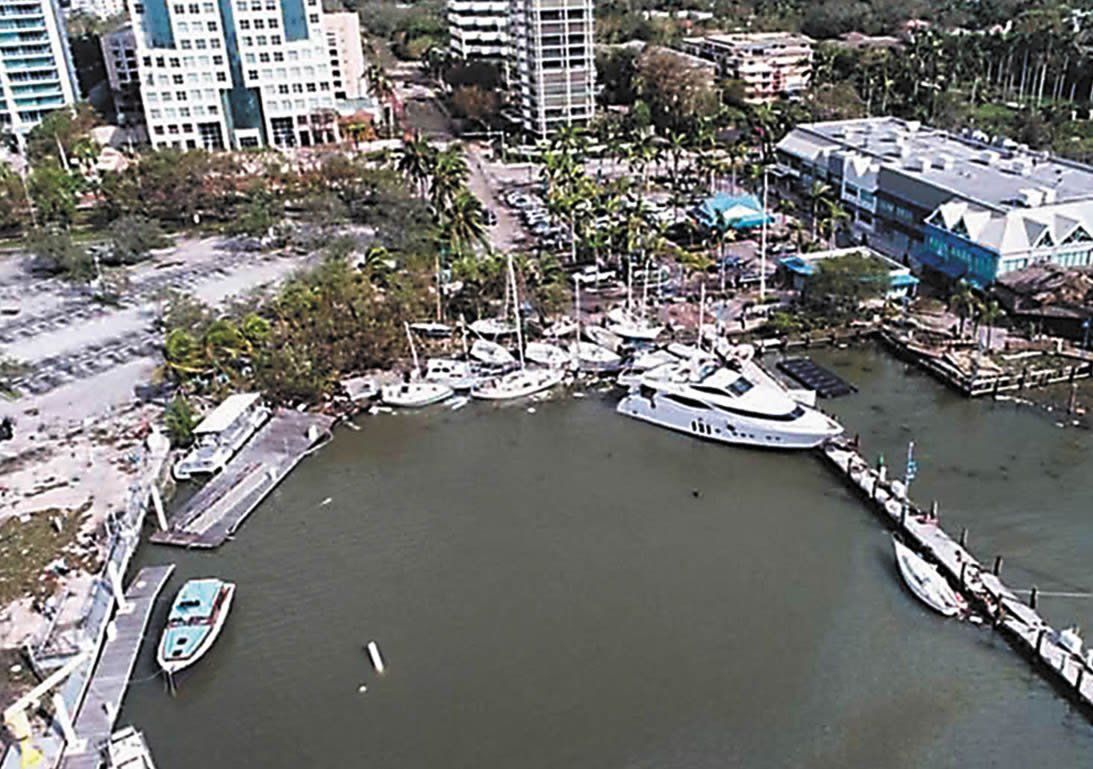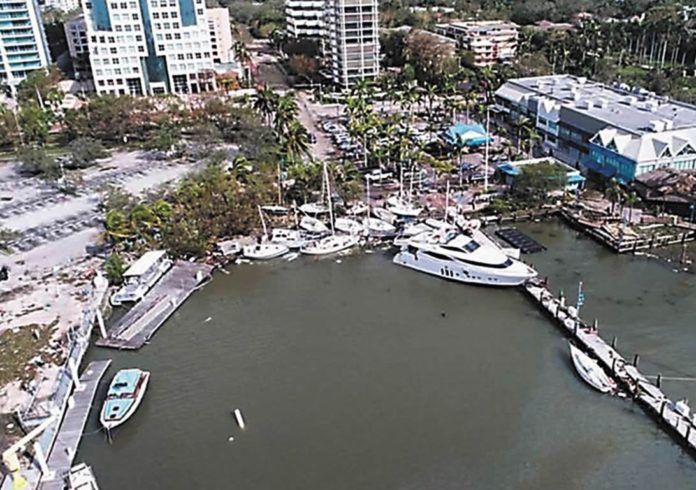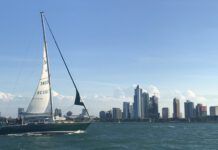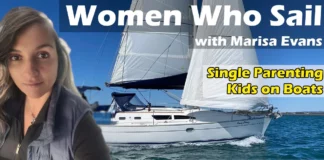Two different harbors suffered almost the same fate as Hurricane Irma raked South Florida with hurricane force winds. In both places, tens of thousands of dollars in damage might have been prevented had the owners of large vessels better secured their boats.

In Boot Key Harbor, Marathon, a fifty-foot houseboat broke lose from its anchor and went careening through the mooring field where dozens of boats where moored. According to the salvage crews I spoke with, the houseboat was one of the key contributors to the pile-up in the harbor that caused several boats to break loose and go ashore. Falling like dominoes, boat after boat stacked up at the dinghy dock, in the mangroves, or into a bridge on the north side of the anchorage.
The boxy houseboat has a colorful history. It had been moored at Boot Key for years, and its hulking mass made it one of the most conspicuous vessels. For previous storms the vessel relocated to nearby Whiskey Creek, where it could cause less havoc in the mooring field if it broke loose. But the new owner, inexplicably, decided to leave the boat anchored for Irma.
Even some of the most attentively moored boats in the harbor were no match for its bulk.
The scene in Dinner Key Marina, 300 miles to the north in Miami was nearly identical. In Dinner Key, however, it wasnt a slab-sided houseboat that bore down on a local sailing club, it was a slab-sided luxury motoryacht. The 90-foot yacht was tied to the end of a dock at Dinner Key where it had been for more than a year. The vessel was reportedly for sale.
As Irma pushed up the center of the state, the storm dragged a five-foot storm surge and strong northeast winds into Biscayne Bay. That surge, along with the wind, apparently snapped the powerboats docklines and sent it drifting down on the floating docks at Shake-a-Leg Miami, a community sailing program that Practical Sailor has supported with gear donations for many years. Shake-A-Leg offers a wide range of services to school kids, U.S. veterans, disabled sailors . . . basically anyone who wants to get on the water and might not otherwise have a chance.
But now their boats, among them a fleet of custom Freedom Independence boats designed by Gary Mull and equipped for disabled sailors, is out of commission. The jumble of boats crammed against mangroves was a mirror image of the mess in Boot Key.
To try to recover some of the losses, Shake-a-Leg has set up a GoFundMe site. Although theyve met their initial goal of $50,000 in a matter of weeks, the cost of clean-up is costing far more than they anticipated. They are hoping to earn another $50,000 this month. An easier way to donate is to go directly to the Shake-a-Leg website at www.shakealegmiami.org. Although a couple of salvors have launched go fund me campaigns, Im not aware of any centralized fundraising effort to help the community of sailors who lost their boat in Boot Key. If anyone knows of such an effort, please drop me a line at [email protected].




































